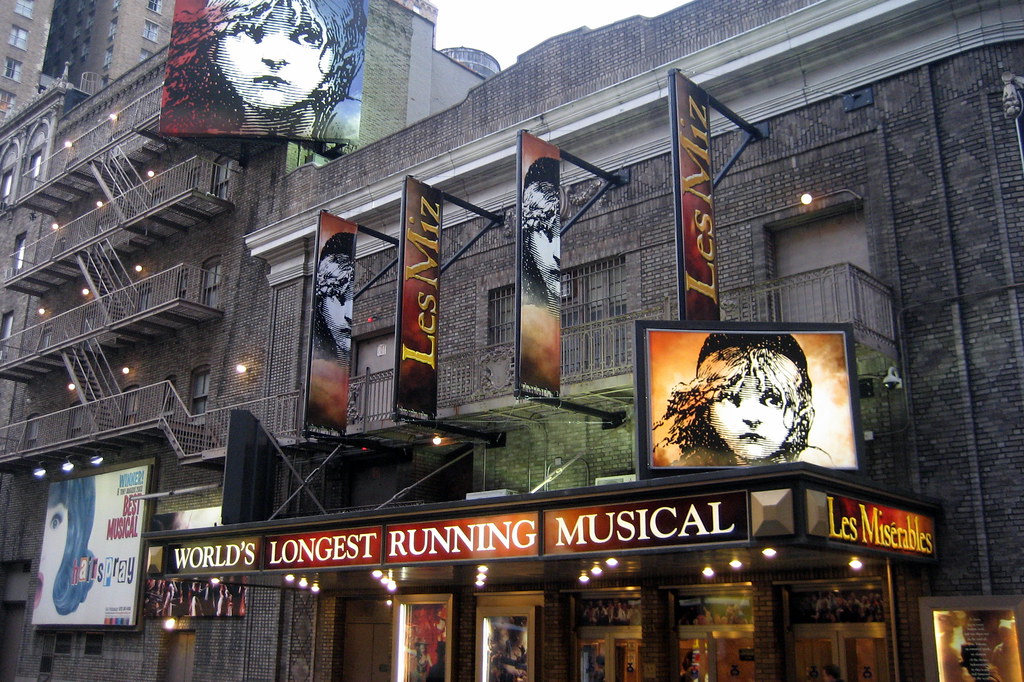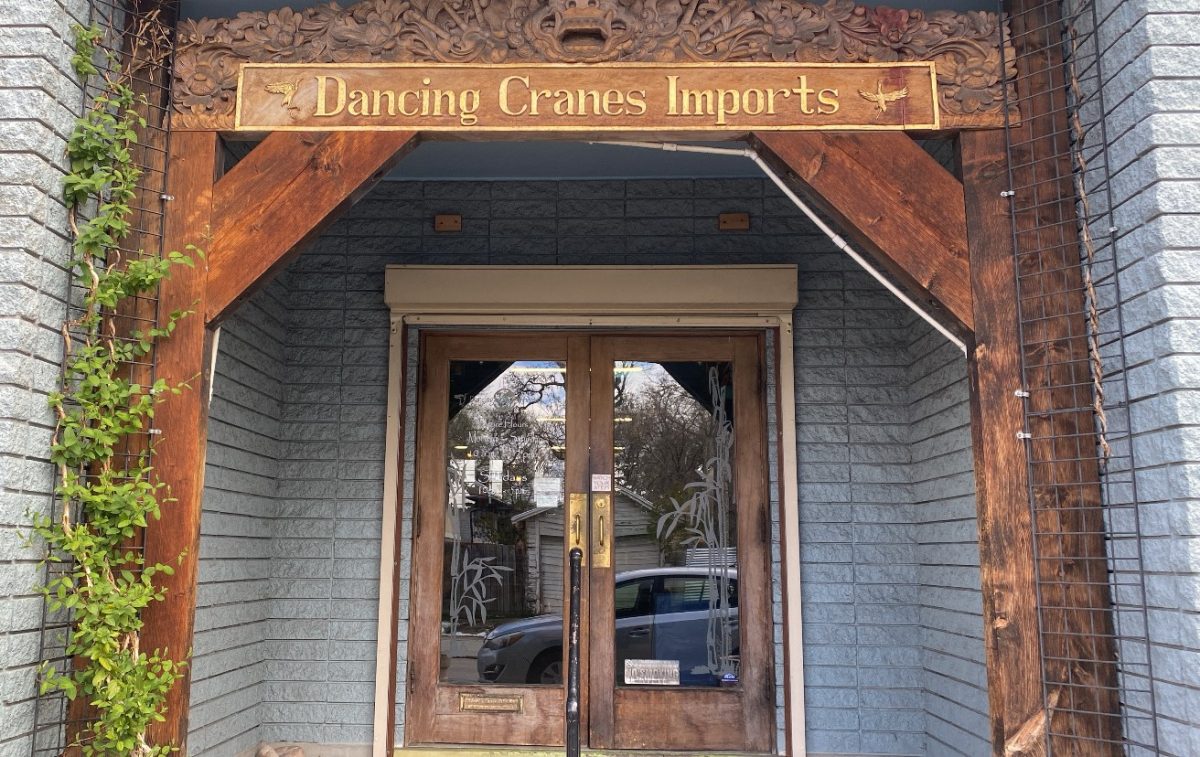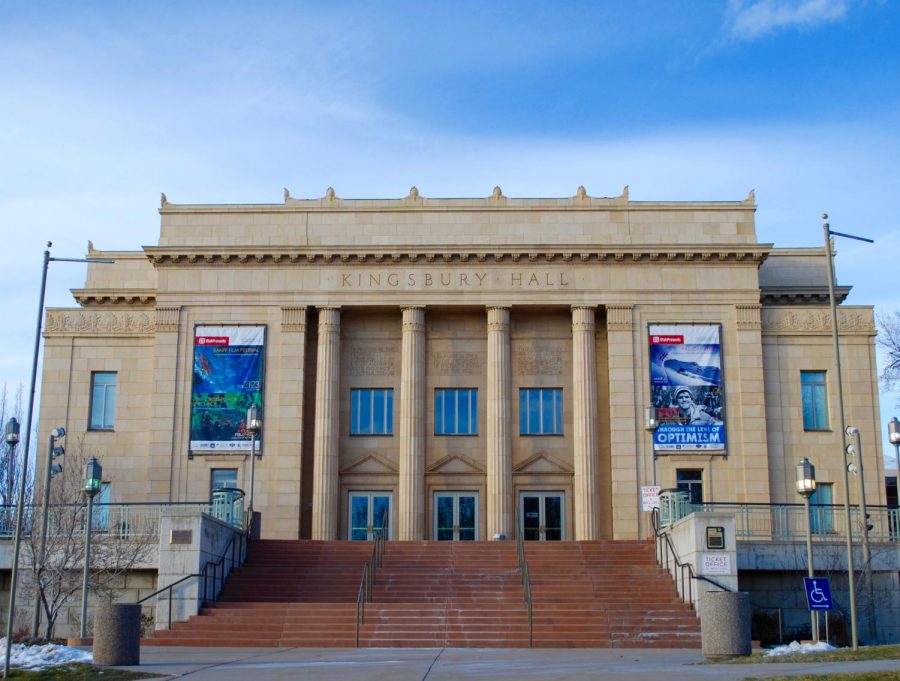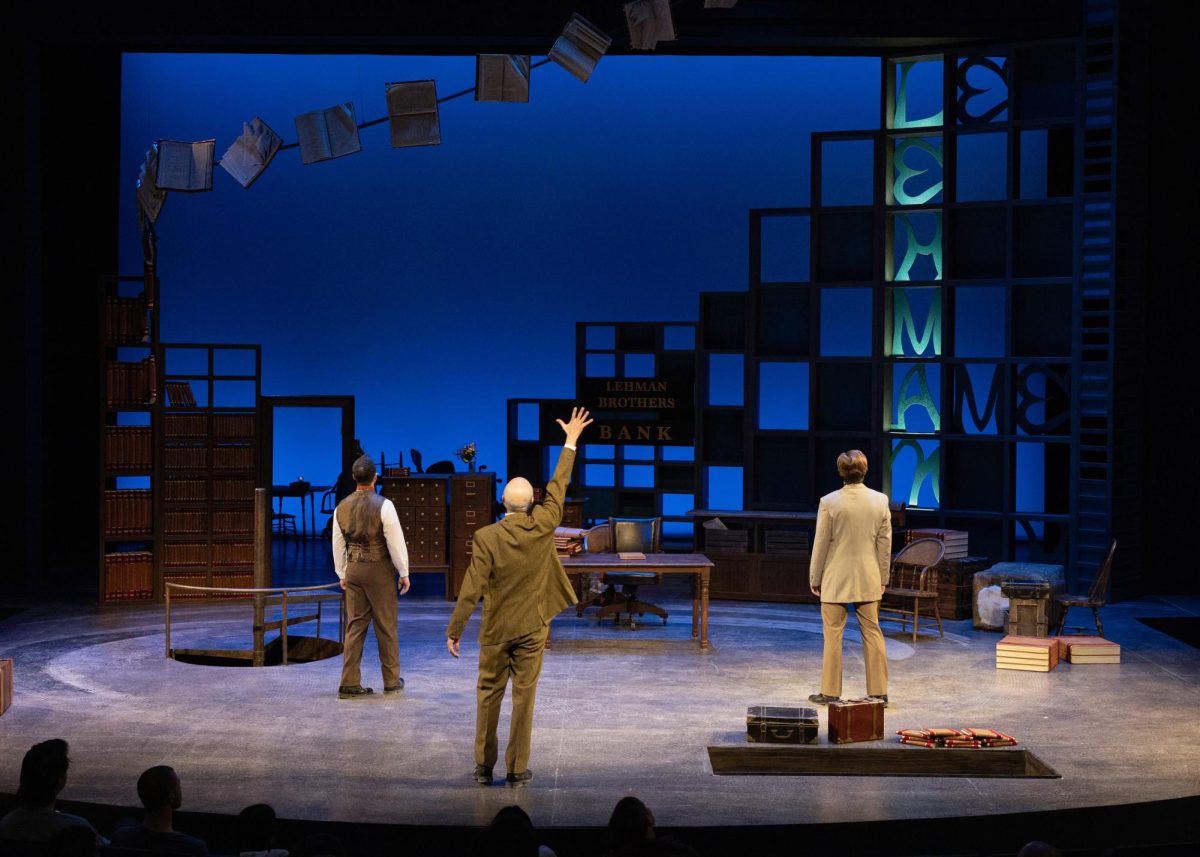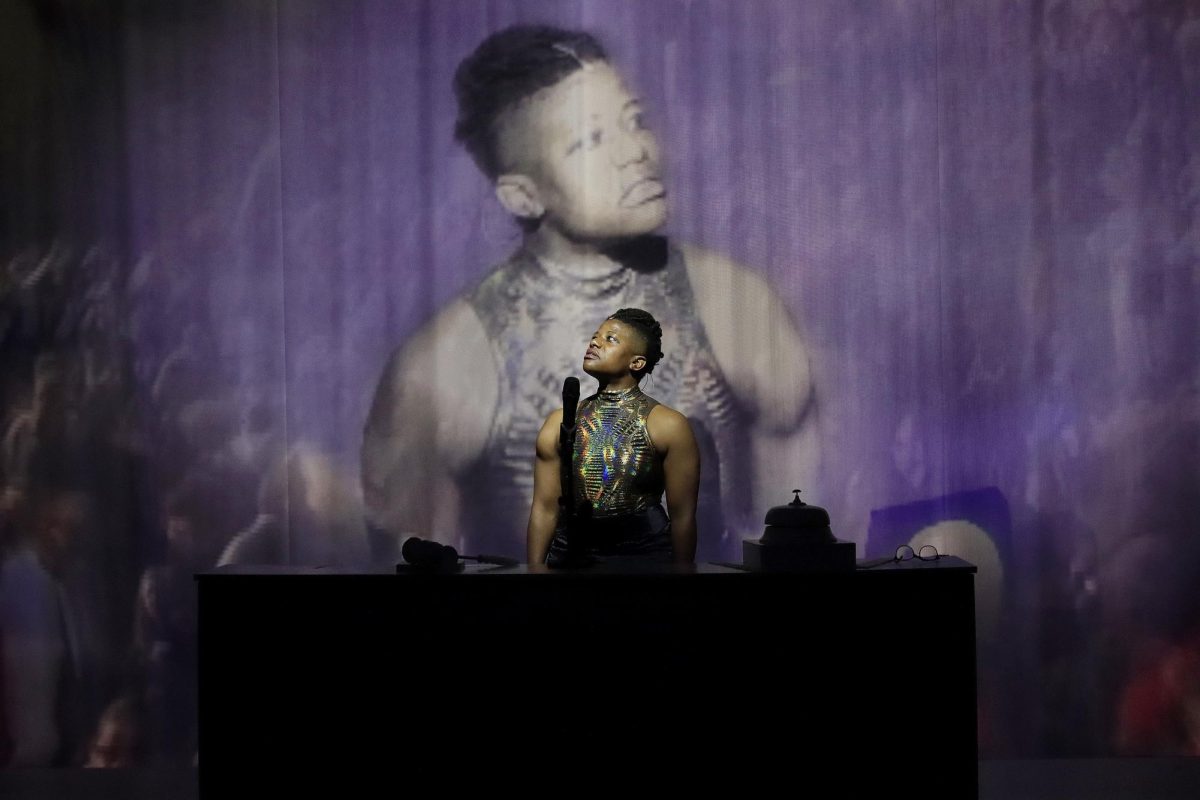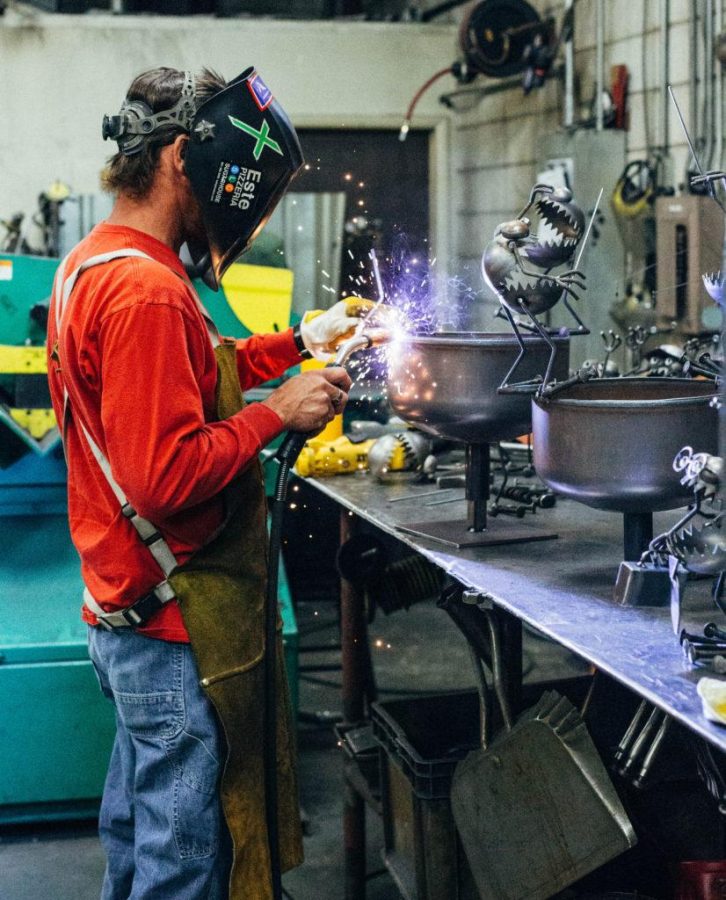The topic of sustainability usually conjures up issues of air quality, food and water but it even crosses over into things like business, education and art. The artistry of sustainability has three pillars to it: cultural, socioeconomic and environmental. It is the idea that art is a reflection of culture and should be made accessible to everyone while also protecting natural resources.
Local artist and University of Utah alumnus Fred Conlon demonstrates how cultural artifacts can be incorporated into sustainable art. His team makes elaborate artwork out of scrap metal and old military helmets at Sugarpost, a pottery and metal shop in Salt Lake. “I’ve been doing this for about 20 years now,” Conlon said. “I used to be a potter, and had a pottery shop for several years, and had some ideas floating around of stuff I wanted to make out of metal.”
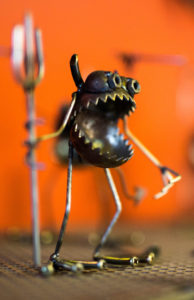 The metal that would have otherwise ended up in landfills makes its way into his artwork; everything from nuts and bolts to motorcycle and transmission parts come through the shop.
The metal that would have otherwise ended up in landfills makes its way into his artwork; everything from nuts and bolts to motorcycle and transmission parts come through the shop.
“It comes from all over these days,” Conlon said. “I have different contractors that bring stuff by — scraps, junk yards, military surplus.”
Conlon welds the materials using electricity as a heat source, which melts different types of metal together, forming a permanent bond.
The team’s signature pieces are expressive monster figures portraying a variety of activities including riding a metal pig, throwing a dummy grenade and snowboarding. Then there are robot mailboxes, which people can custom order. One of the tall mailboxes stands outside the Salt Lake Bike Collective.
Sugarpost utilizes the most metal scraps when creating custom orders because the artists can integrate more elements into a unique piece. In the lobby of the shop is a series of monster figures as well as a parrot made from a wrench, a frog wearing a crown and a red metal lobster.
“Generally speaking, we’ve gotten to the point with the business where stuff is actually coming to us,” said Todd Slack, employee at Sugarpost. “People are actually thinking, ‘Well, instead of just taking it to the dump, why not check with Sugarpost first?’”
Perhaps some of the most culturally encapsulating items used are the salvaged military helmets which have, on occasion, been found with notes scribbled on the inside. Slack believes the helmets are a “good way to preserve the memory and integrity” of the soldiers.
“I had a grandfather who was at Pearl Harbor when the Japanese attacked back in WWII and he always told me that war happens quickly,” Conlon said. “One day I was up at the scrap yard and saw a giant pile of old army helmets and kind of thought, ‘Yeah war does happen quickly. But peace, on the other hand, moves slowly and turtles move slowly and all these army helmets look like turtle shells. So why not make turtles out of old army helmets?’
“I’m inspired by all sorts of different things,” he added. “I guess it’s been almost 42 years of experience — seeing different things, people, places — that have inspired me [and] basically brought me to where I am now.”
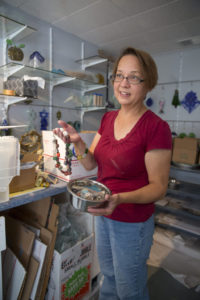 Another local artist, Jodi McRaney-Rusho, has been making jewelry, sculptural artwork and bottle bottom molds out of post-consumer glass for 15 years. She graduated from the U with a degree in economics and will be teaching a class at the U’s lifelong learning center this summer called, “Fused Glass Art with Recycled Glass.”
Another local artist, Jodi McRaney-Rusho, has been making jewelry, sculptural artwork and bottle bottom molds out of post-consumer glass for 15 years. She graduated from the U with a degree in economics and will be teaching a class at the U’s lifelong learning center this summer called, “Fused Glass Art with Recycled Glass.”
“I bought the most expensive kiln I could and then couldn’t afford any glass so I just started melting bottles and leftover windows out of people’s houses and it just sort of snowballed from there,” McRaney-Rusho said of her decision to re-purpose glass for use in her artwork. “There is a wide variety of glass made specifically for making art and it runs for about $20 a square foot. It’s very expensive so originally it was an economic decision. It was something we had on hand; I didn’t want to wait until I could get something else so I just dove right in.”
She even invented her own way to make more glass out of leftover scraps. “I think it’s very cool but when I tell people it sounds slightly insane,” McRaney-Rusho laughed. “I built a machine that — I call it Chewy, I name all my tools — but I built this machine out of a garbage disposal.”
The glass is ground into what looks like a gravel of different sizes and colors which are then sorted, mixed and melted together to create a new piece of glass.
The green aspect of her art became increasingly important as she continued to make it. “Particularly as I started to research and discovered that a lot of the glass I was using could not actually be recycled currently like window glass out of people’s houses,” she said. “That all goes to the landfill and it’s just such great glass.”
“When the University had their solar program we [. . .] bought enough solar panels to run our home and the entire glass shop off solar,” she added. “We invested in that because it’s just a critical, key component of both the artwork and the personal life. Those two things tied together pretty well.”
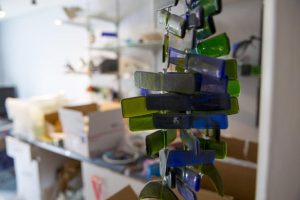 McRaney Rusho teaches in-person classes for kids as well as live streaming online classes for a local company called Curious Mondo which are broadcast worldwide. “I believe that the best way to convince people to be green is through education,” McRaney-Rusho said. “I help people particularly in other countries that don’t have access to any other kind of glass.”
McRaney Rusho teaches in-person classes for kids as well as live streaming online classes for a local company called Curious Mondo which are broadcast worldwide. “I believe that the best way to convince people to be green is through education,” McRaney-Rusho said. “I help people particularly in other countries that don’t have access to any other kind of glass.”
The U’s Sustainability Office does its part to integrate environmentally friendly initiatives on campus, but the Department of Art and Art History also delves into that arena to bring awareness to these issues.
“I teach a mix of classes from kind of our core sculpture 1, 2 and 3 which is really working with conceptual practices and professional practices, building portfolios,” said Wendy Wischer, assistant professor of sculptural inter-media, “and then I teach video and installation and experimental sculpture which includes some performative aspects.”
Wischer said sculptural inter-media is a blend of traditional sculptural processes which could involve things like metal work or mold making, but sometimes the process falls somewhere in between different media.
For instance, the body could be used as a medium for performance while not necessarily being dance or theatre. Wischer said it’s the same with video because there’s no need for a specific start or stop time when it’s used experimentally and the film can even become a sculptural element.
Recently, Wischer and assistant professor Erik Brunvand from the Department of Computer Science collaborated on an installation called “Collective Currents” using new media. The project was shown at the Liquid Collaborations exhibit with the theme being the significance of water in the West. The installation was a commentary on environmentalism seen through an artistic lens.
“I’m teaching a class this semester for the Honors College called Art, Action and the Environment and the class is working on their capstone project which is a collaborative, socially engaged artwork within the community on an environmental issue,” Wischer said. “[The students] have chosen to bring attention to Red Butte Creek which runs through campus, to the campus community. They have several part components to their project that they are working on now.”
Wischer is gearing up for the Honors College event which will take place later this month with a tentative date set for April 20. Whether it’s metal, glass or environmental art exhibitions, it is a beautiful way to bring consciousness and change. More of this type of collaboration between departments and industries is certainly a welcome development in the sustainable arts.
@laurengtrz







